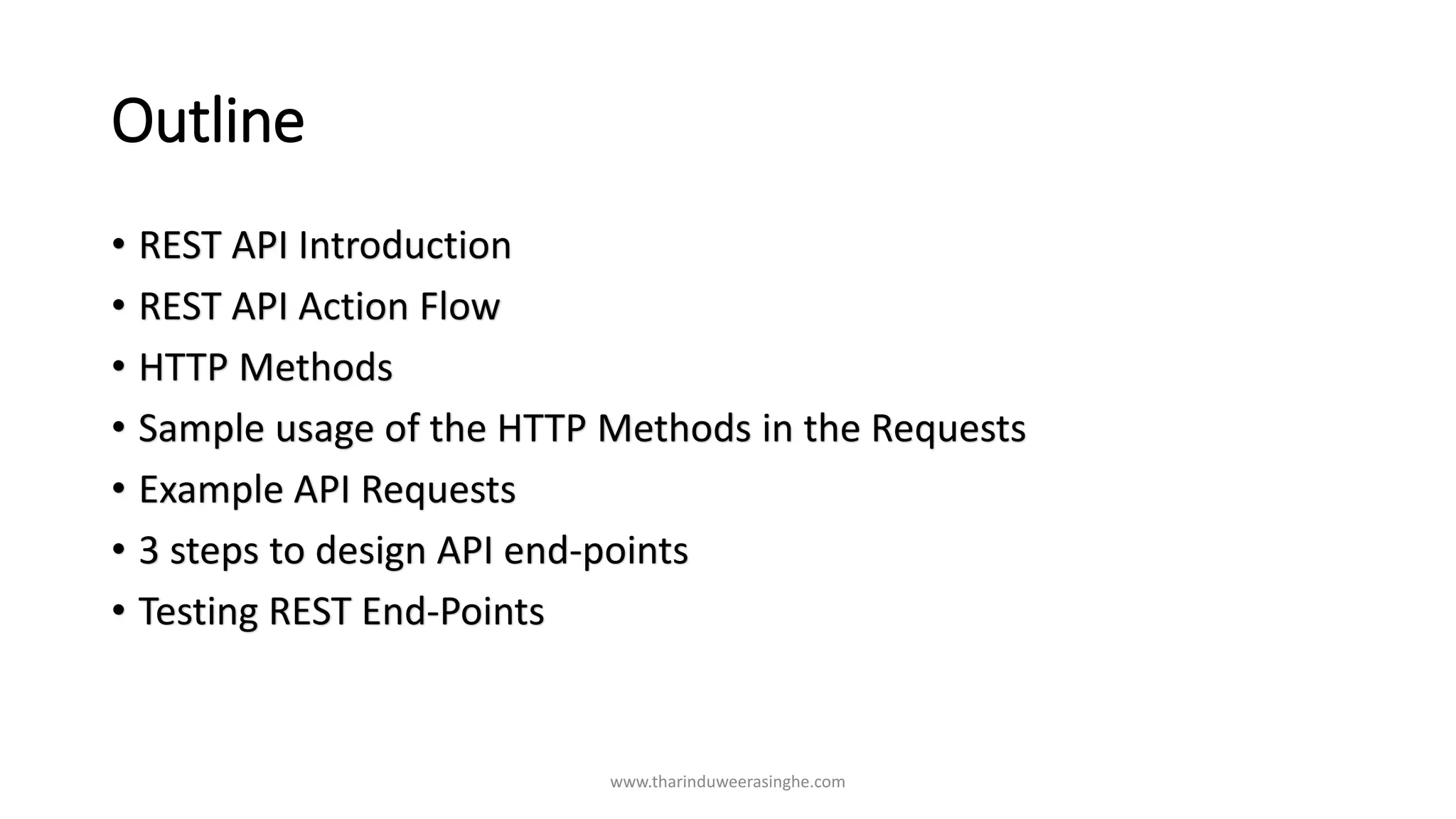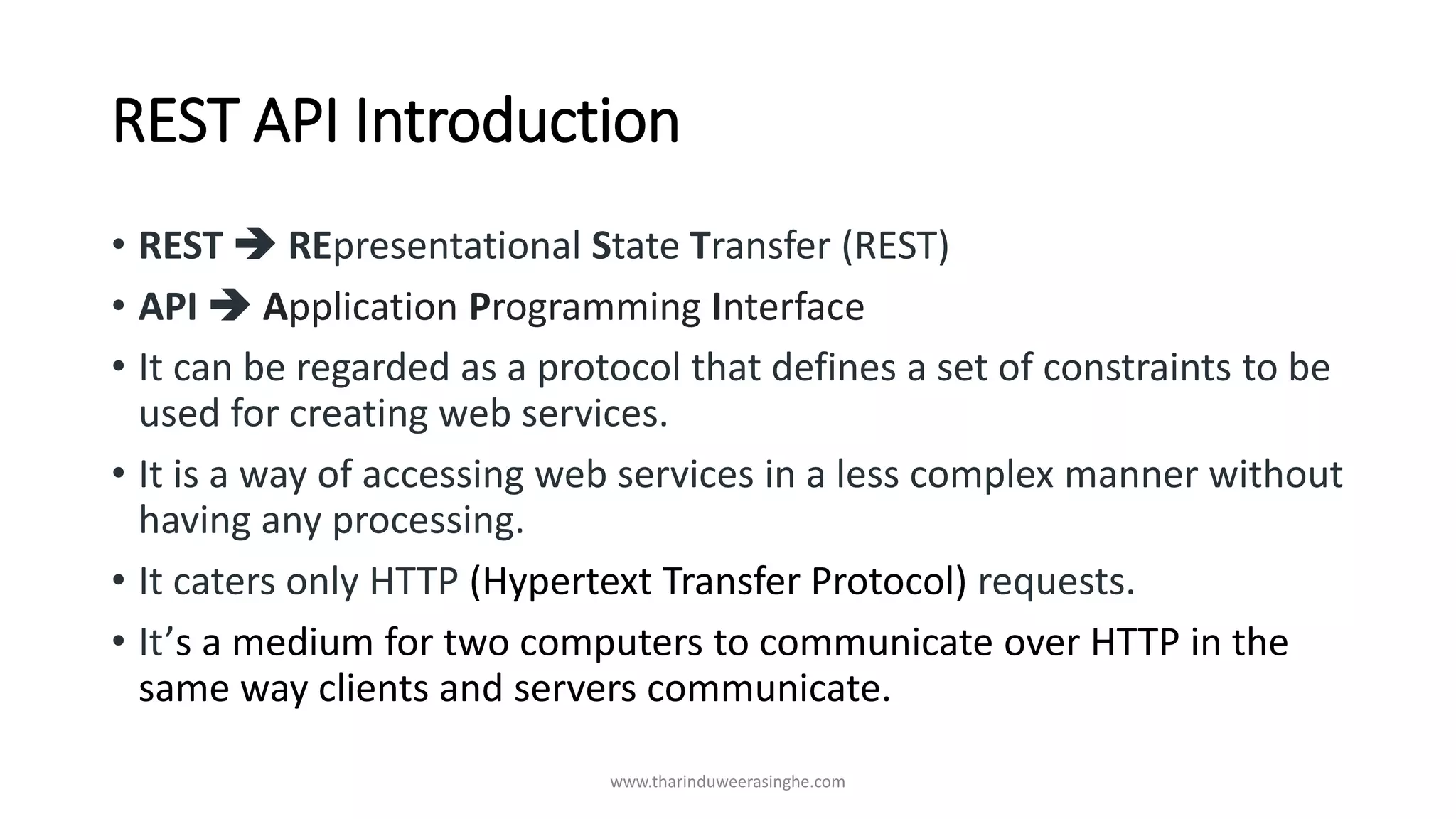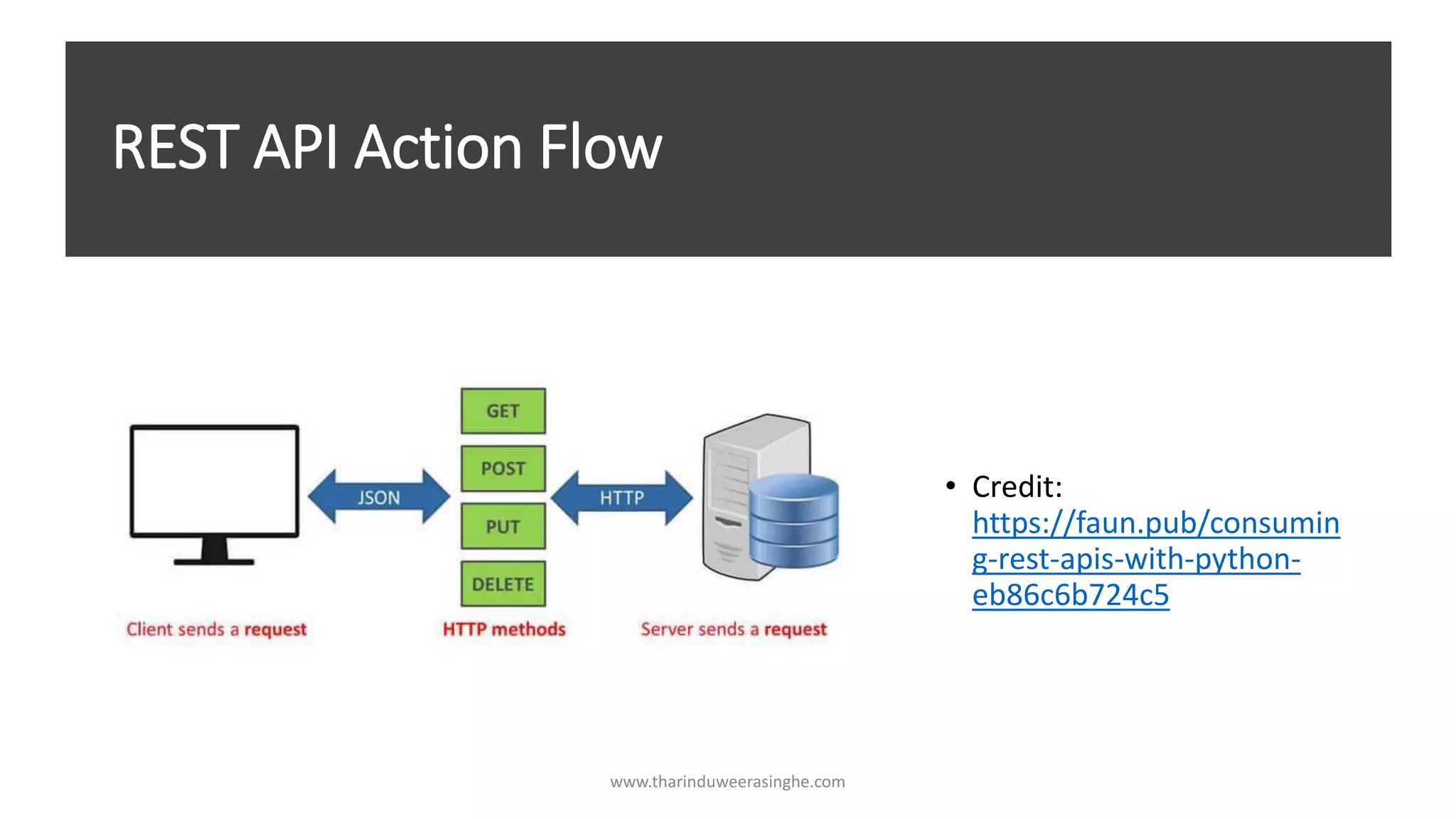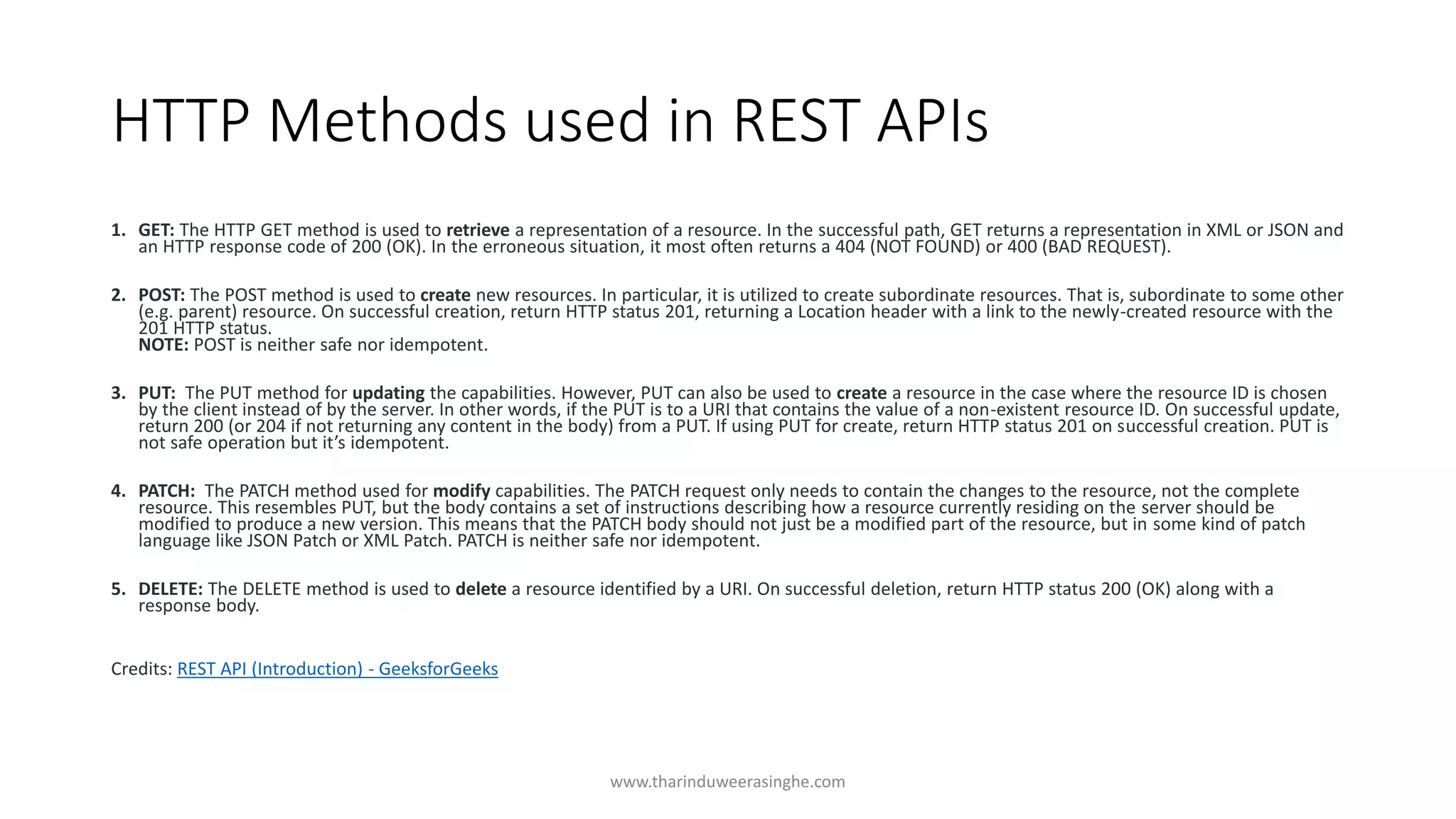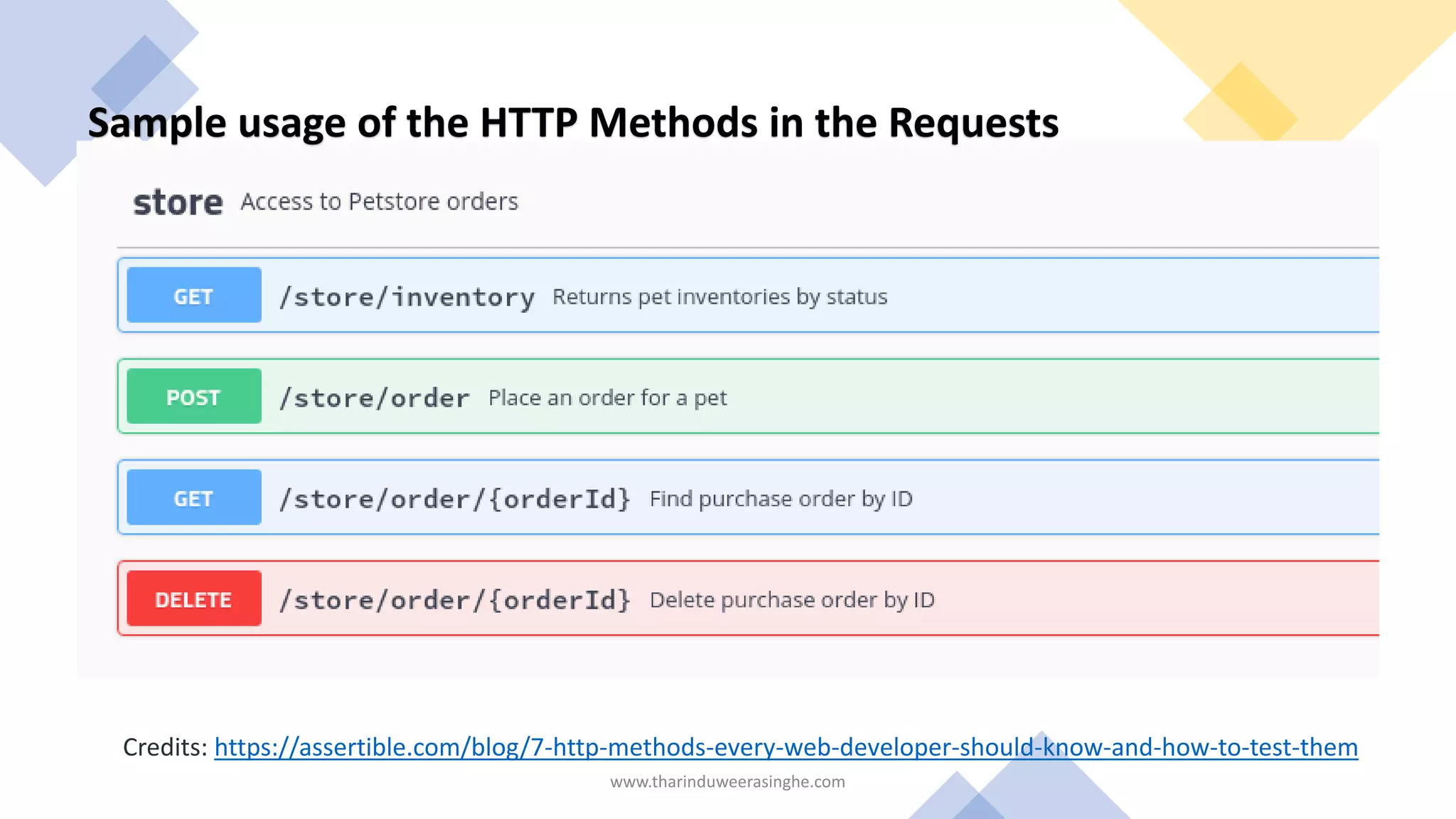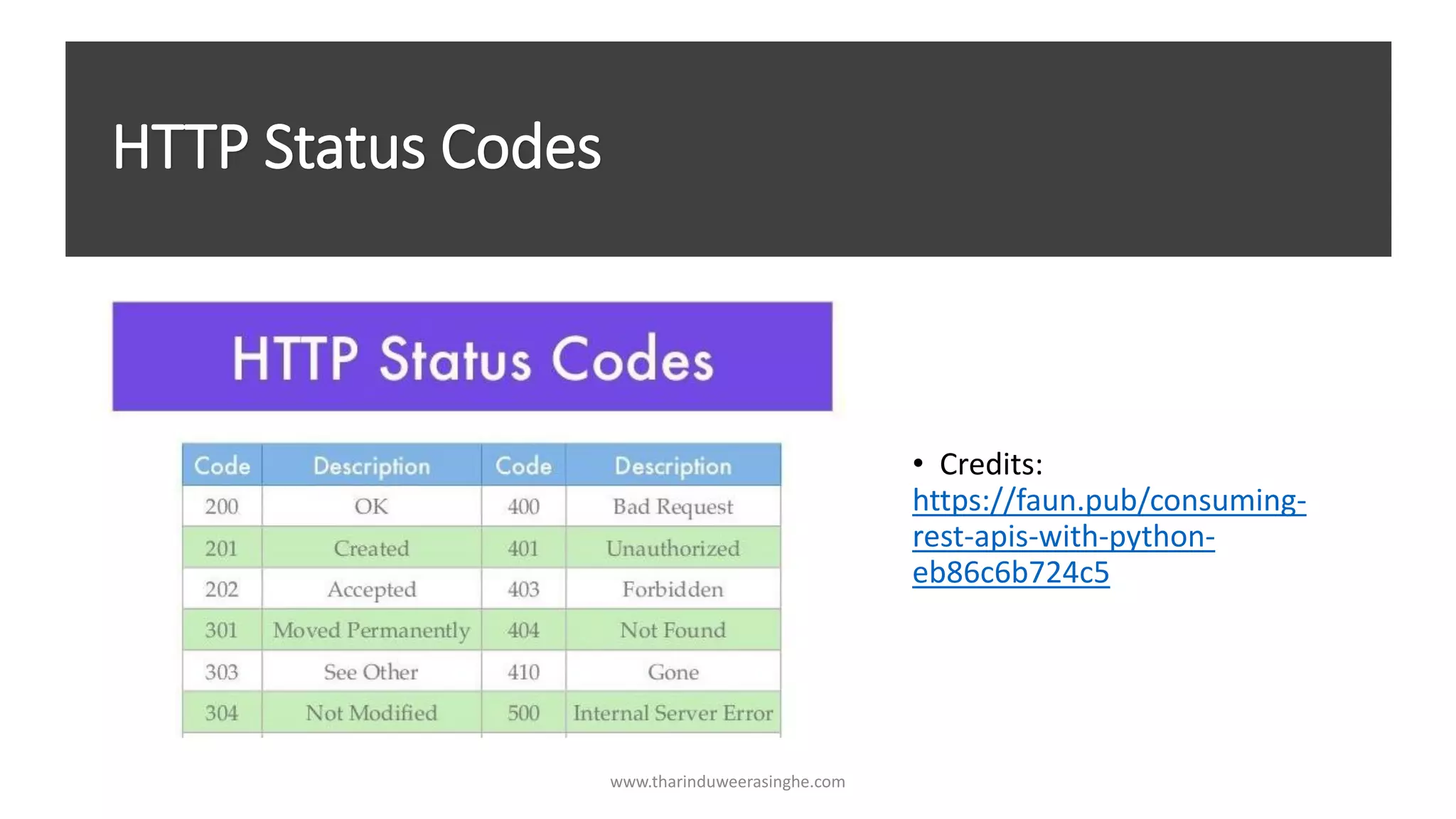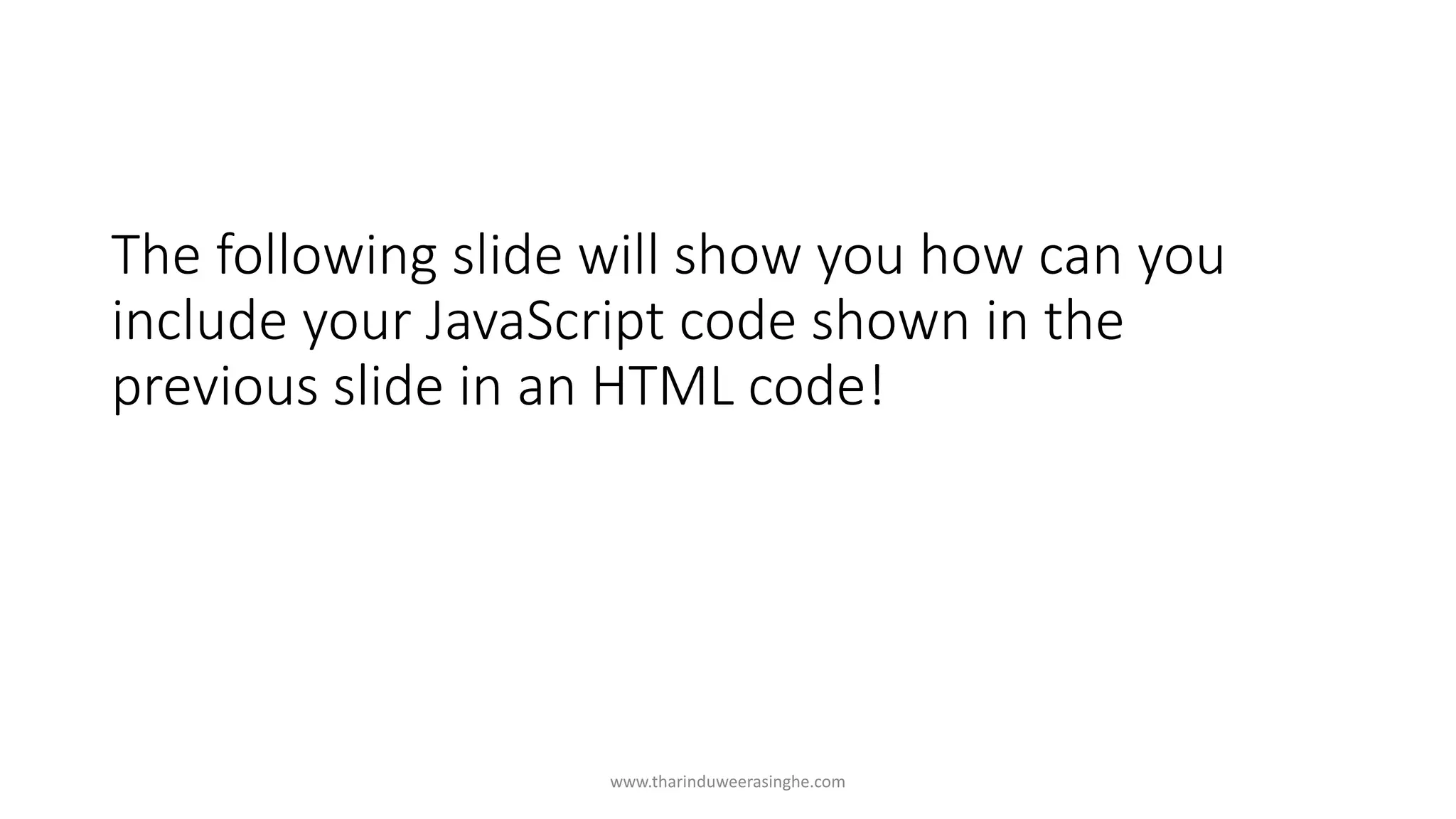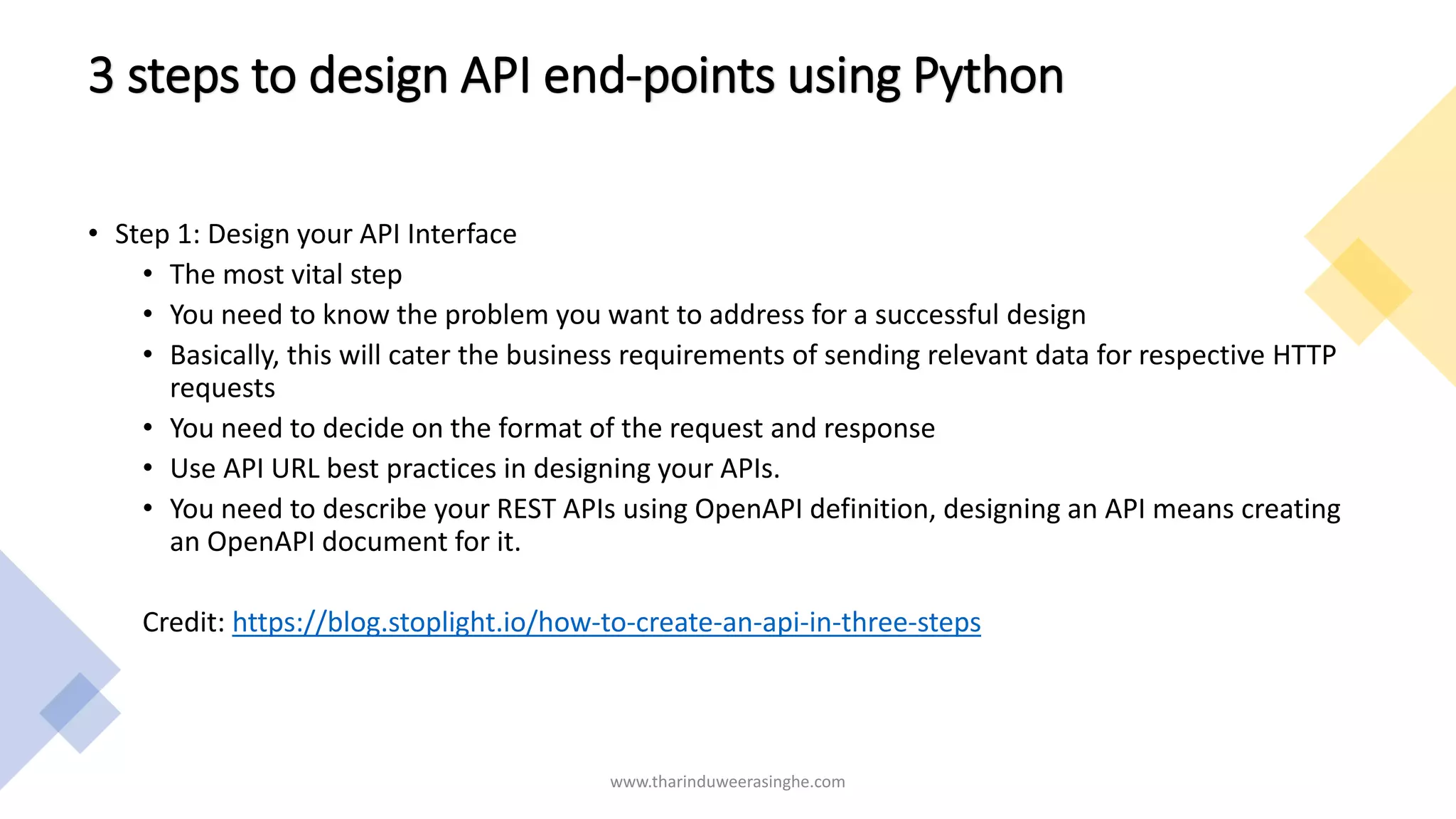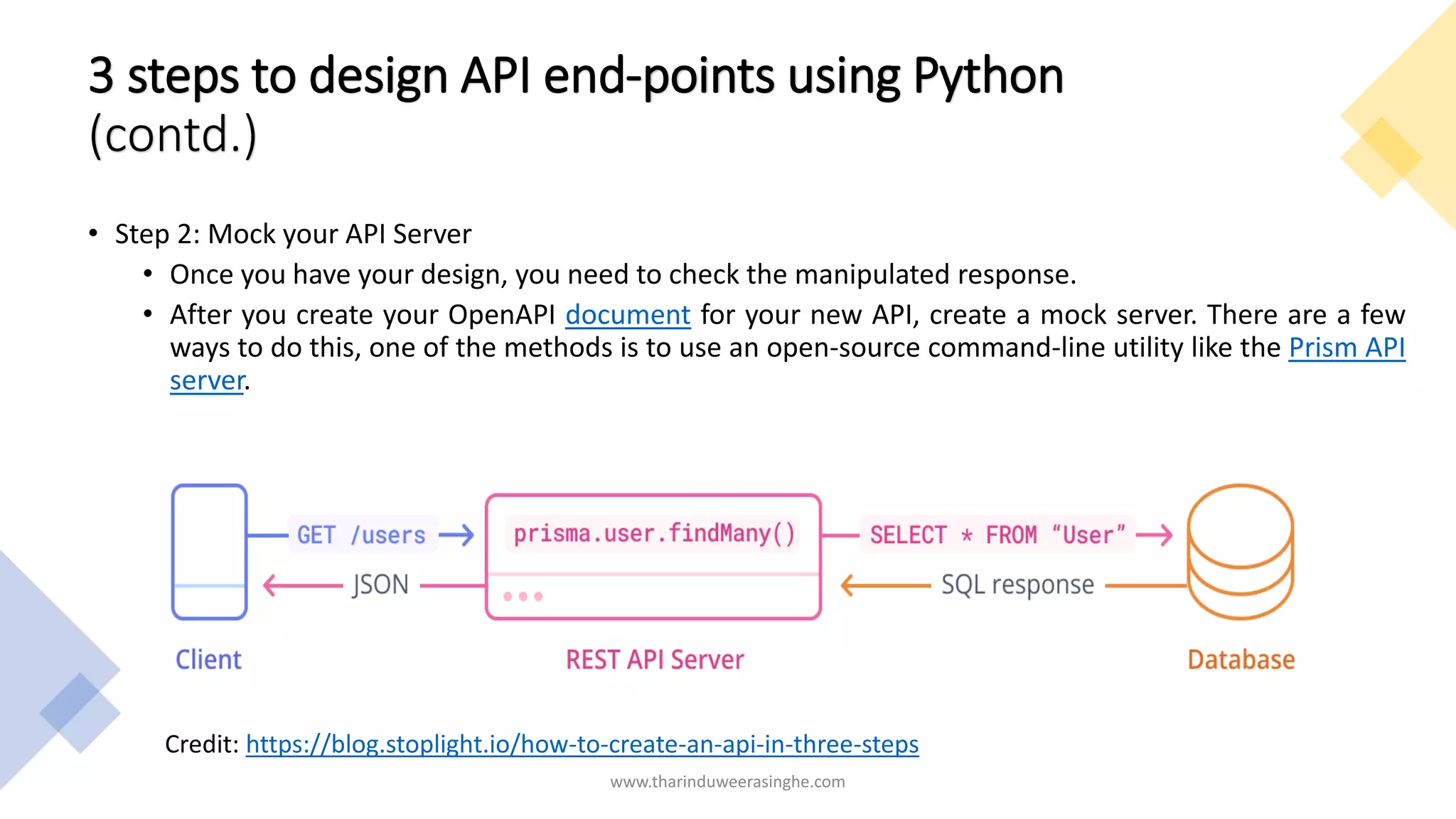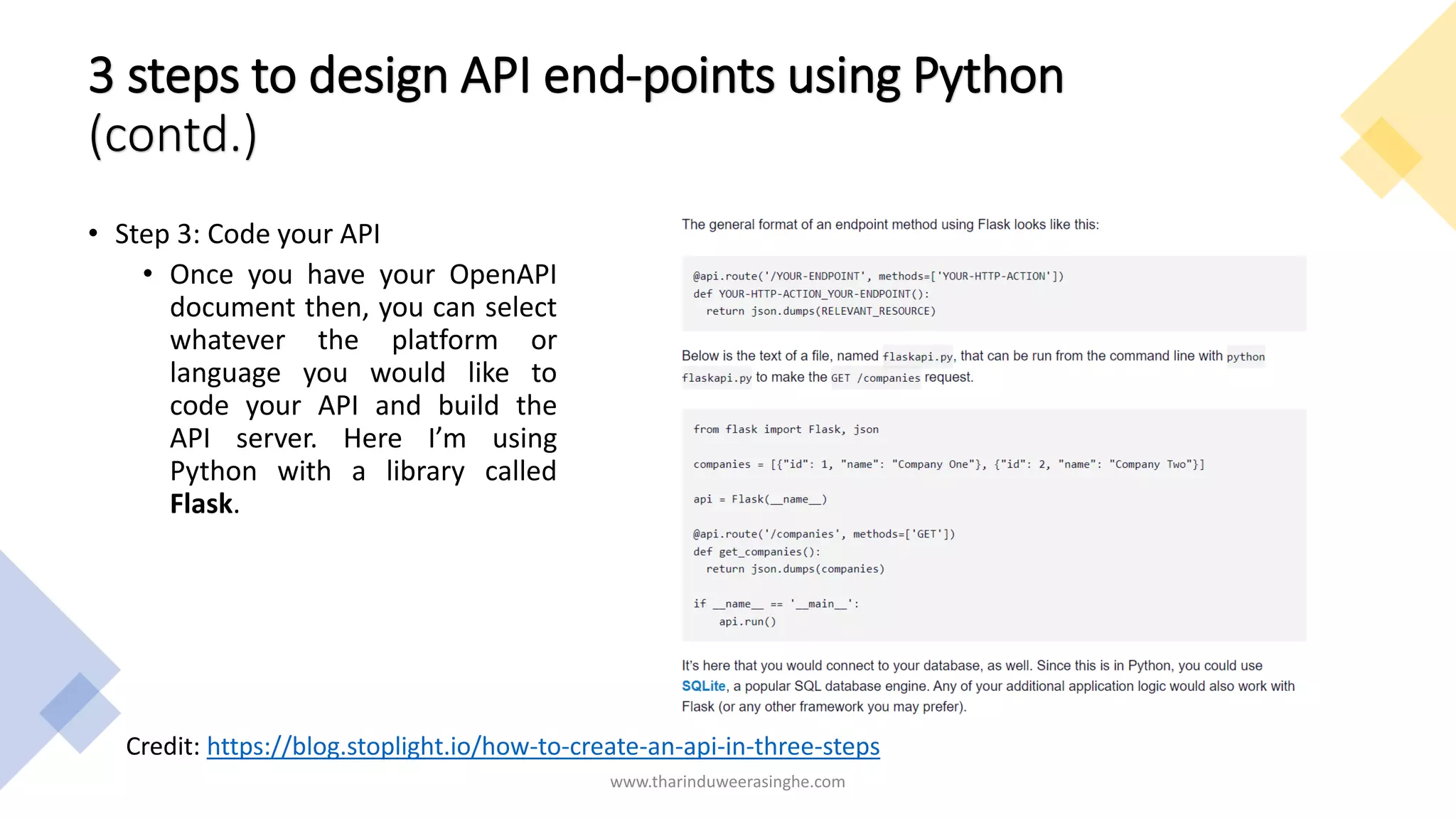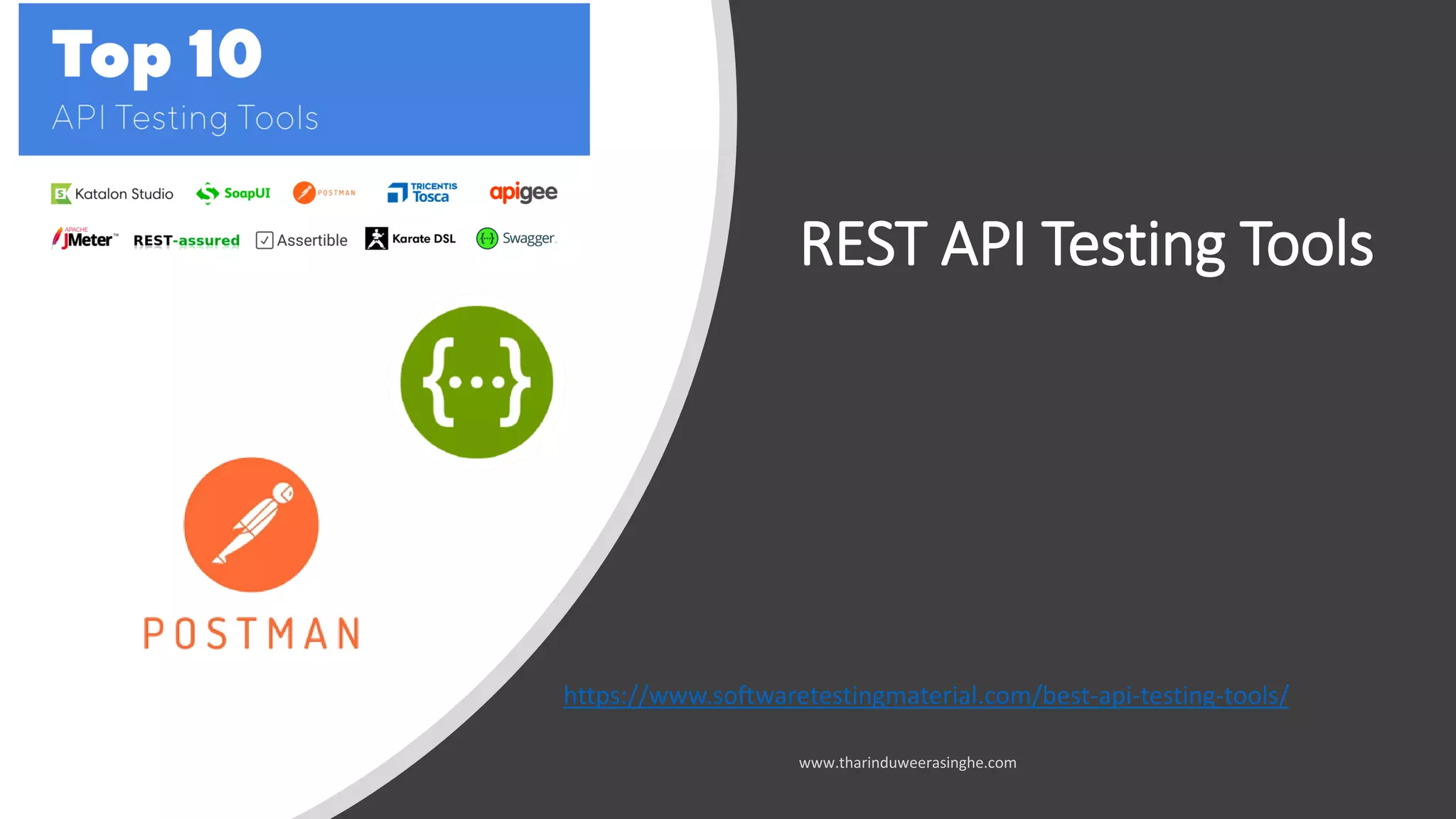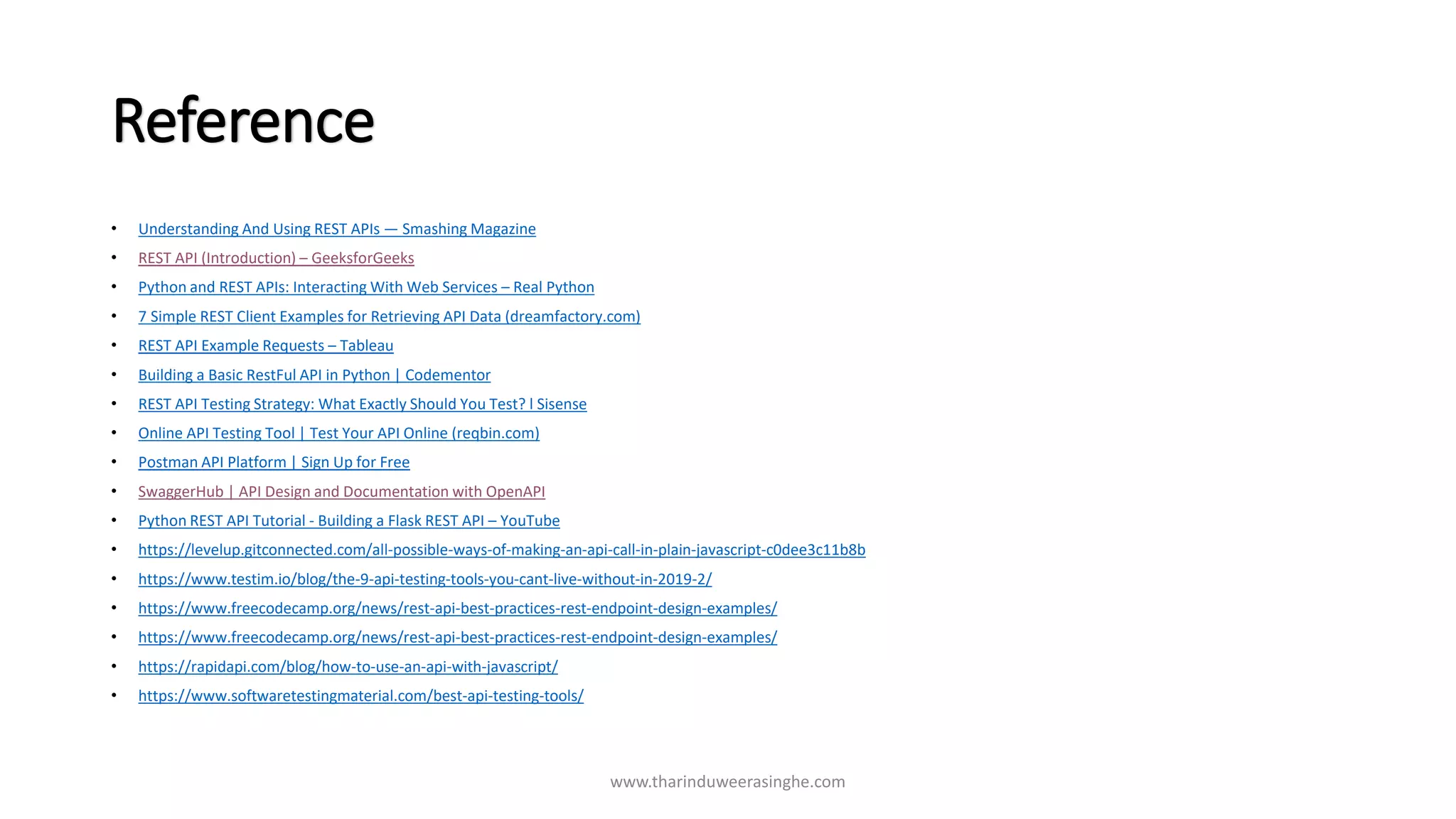This document outlines a lecture series on REST API basics for third-year undergraduates at APIIT, Sri Lanka, covering topics such as HTTP methods, API design, and testing tools. It explains various HTTP methods (GET, POST, PUT, PATCH, DELETE) and their usage in REST APIs. Additionally, the document provides a structured approach for designing API endpoints in three steps using Python, alongside references to relevant resources and tools for API testing.

